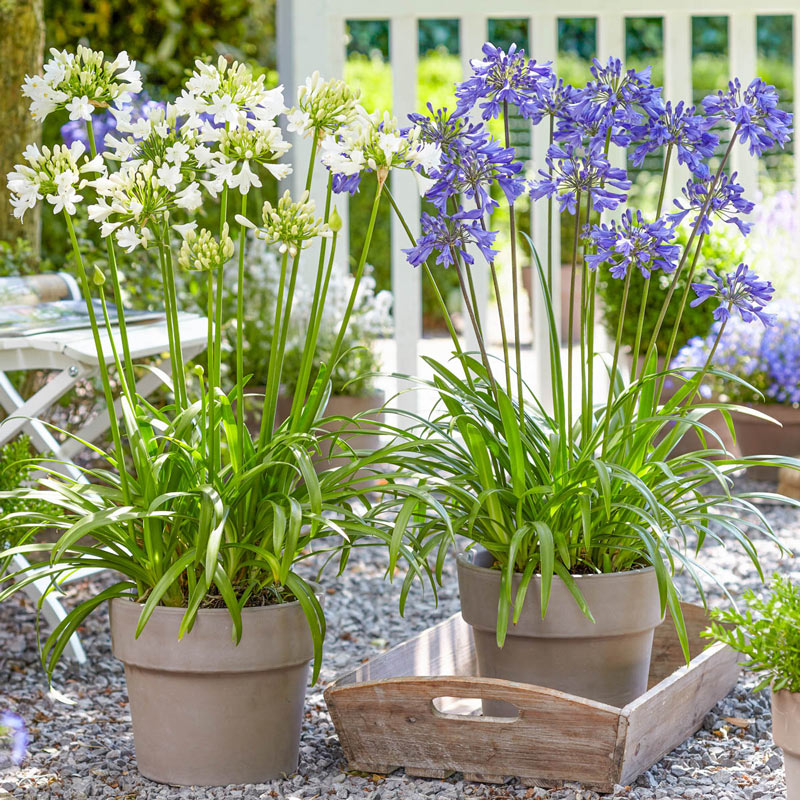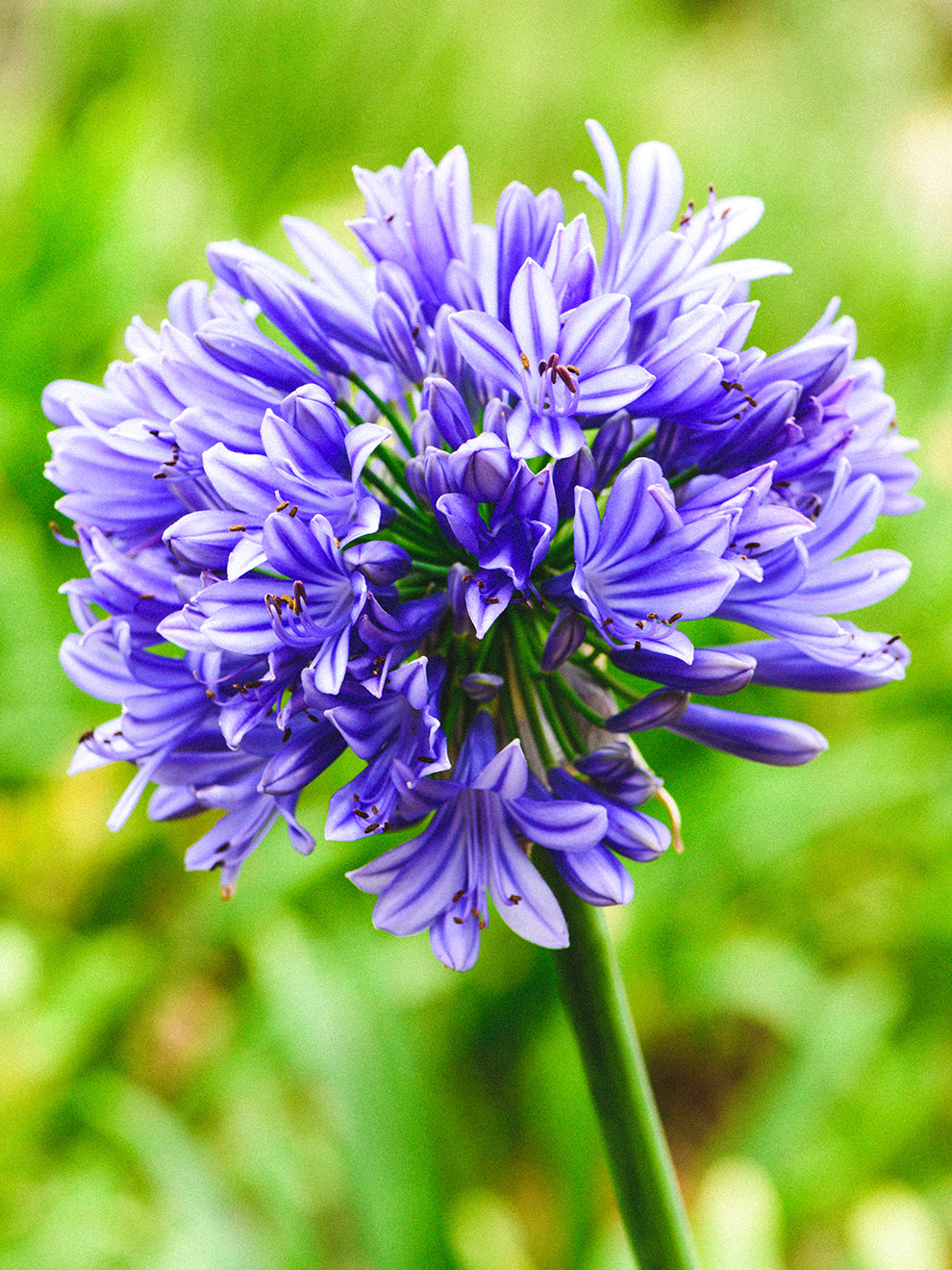Growing Agapanthus: A Full Guide to Beautiful Blooms
Growing Agapanthus: A Full Guide to Beautiful Blooms
Blog Article
Mastering the Art of Agapanthus Treatment: Crucial Steps for Healthy And Balanced Development and Lively Blooms
In the realm of cultivation, the farming of agapanthus stands as a satisfying venture for those who seek to nurture these stylish blooming plants. With their striking blossoms and stylish vegetation, agapanthus has actually captured the focus of gardeners worldwide. Nevertheless, attaining optimal growth and dynamic blooms needs a nuanced strategy that includes numerous crucial actions. From picking the right selection to understanding pruning strategies, the trip towards growing growing agapanthus plants is multifaceted and holds the crucial to unlocking the complete possibility of these organic gems.

Picking the Right Agapanthus Range

When choosing the best Agapanthus variety for your garden, think about elements such as environment suitability, blossom shade, and growth habit. Agapanthus, typically called Lily of the Nile or African lily, is available in a range of shades ranging from tones of blue and purple to white. Select a bloom color that complements your existing garden scheme to produce an unified landscape. In addition, consider the environment in your region to make certain the Agapanthus variety you select can prosper in your certain problems. Some ranges are a lot more tolerant of cold temperatures, while others favor warmer climates. Comprehending the growth practice of different Agapanthus ranges is important for appropriate placement within your yard. Some varieties have a clumping development routine, perfect for containers or borders, while others have an even more dispersing nature, appropriate for ground cover or mass growings. By thoroughly evaluating these elements, you can choose the perfect Agapanthus variety to boost the elegance of your yard.
Perfect Growing Conditions
Taking into consideration the optimum environmental demands is important for effective Agapanthus growing. Agapanthus thrives in well-draining soil with a slightly acidic to neutral pH level. When planting, pick an area that gets complete sunshine to partial shade. In hotter climates, providing some afternoon color can avoid scorching of the fallen leaves. Agapanthus plants are delicate to cold temperatures and need to be safeguarded from frost throughout cold weather.
To make sure healthy and balanced growth and dynamic flowers, plant Agapanthus light bulbs at a deepness of regarding 2-4 inches and room them 8-12 inches apart. Including raw material, such as garden compost, to the dirt can improve drainage and fertility, promoting robust root advancement. Mulching around the base of the plants aids maintain moisture and reduces weed development. Regular watering is crucial, especially during the growing period, to keep the dirt consistently moist but not soaked.
Watering and Fertilizing Tips
Keeping proper moisture levels and offering essential nutrients are vital components in the treatment program for Agapanthus plants. When it concerns sprinkling Agapanthus, it webpage is critical to strike a balance. These plants choose consistently moist dirt however are prone to root rot if overwatered. Throughout the expanding season, water deeply when a week, making sure the dirt is well-draining to avoid waterlogging. In hotter environments or throughout periods of drought, even more frequent watering might be essential to keep the soil evenly damp. However, decrease watering in the winter months to avoid water logged problems.
Fertilizing Agapanthus is crucial for promoting healthy and balanced growth and respected flowers. Use a well balanced plant food, such as a 10-10-10 formula, in the early spring as brand-new development emerges. By adhering to these watering and feeding suggestions, you can guarantee your Agapanthus plants thrive and generate lively, durable blossoms.
Pruning Methods for Agapanthus
Pruning Agapanthus plants at the appropriate times and with appropriate strategies is vital for maintaining their health and wellness and advertising optimal growth and flowering. The suitable time to prune Agapanthus is in late wintertime or early spring before new growth arises.
For flowered stems, wait till the blooms have perished and afterwards trim them back to the base. This not only cleans up the plant's appearance but also urges the growth of brand-new blossom buds. Deadheading invested blossoms can likewise reroute the plant's energy into creating more flowers as opposed to establishing seeds. Nevertheless, if you intend to gather seeds for breeding, leave some blossoms to completely dry and fully grown on the plant.
Bear in mind to utilize check clean, sharp devices to make accurate cuts and minimize the danger of presenting conditions. Agapanthus. Regular pruning will assist keep your Agapanthus looking neat and healthy while making sure an abundant display of lovely flowers
Handling Usual Insects and Illness
After guaranteeing correct click here to find out more pruning methods for Agapanthus, it is necessary to resolve typical bugs and conditions that can influence the health and vigor of these plants. One common pest that influences Agapanthus is the Agapanthus gall midget.
Furthermore, Agapanthus plants can experience from origin rot if they are planted in badly draining dirt. By being cautious and taking prompt action against pests and diseases, you can aid your Agapanthus plants prosper and generate vibrant blossoms. Agapanthus.

Final Thought
In verdict, grasping the art of agapanthus care includes choosing the appropriate variety, offering suitable planting problems, correct watering and feeding, suitable trimming techniques, and dealing with common insects and diseases. By complying with these important steps, you can make certain healthy and balanced growth and vivid blooms for your agapanthus plants. Bear in mind to frequently monitor and preserve your plants to advertise their total well-being and durability.
To make certain healthy and balanced development and vivid blossoms, plant Agapanthus light bulbs at a depth of about 2-4 inches and room them 8-12 inches apart. By adhering to these watering and fertilizing suggestions, you can ensure your Agapanthus plants prosper and create dynamic, long-lasting flowers.
One typical bug that impacts Agapanthus is the Agapanthus gall midget. Furthermore, Agapanthus plants can endure from root rot if they are grown in improperly draining soil. By following these essential actions, you can ensure healthy and balanced development and vibrant flowers for your agapanthus plants.
Report this page